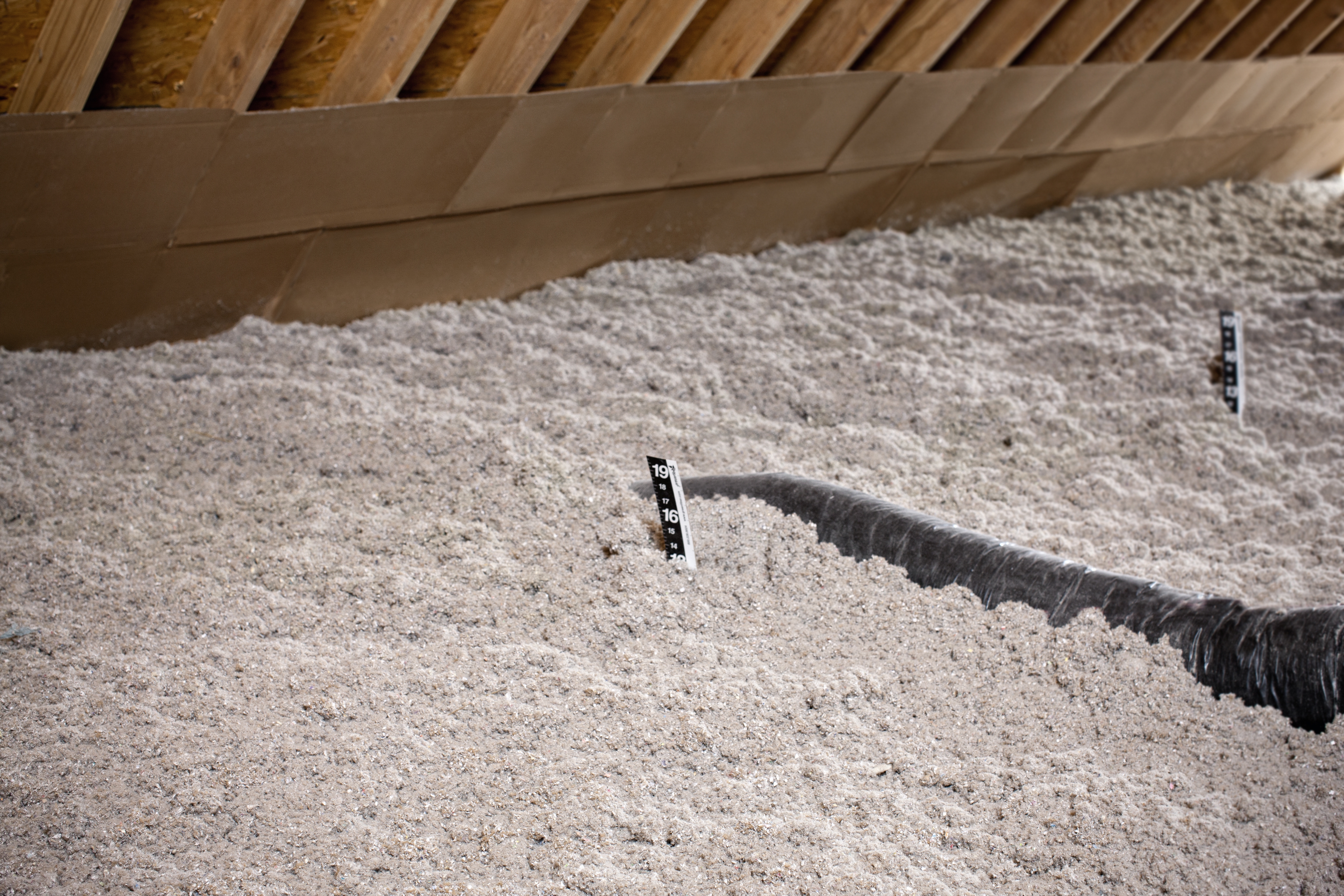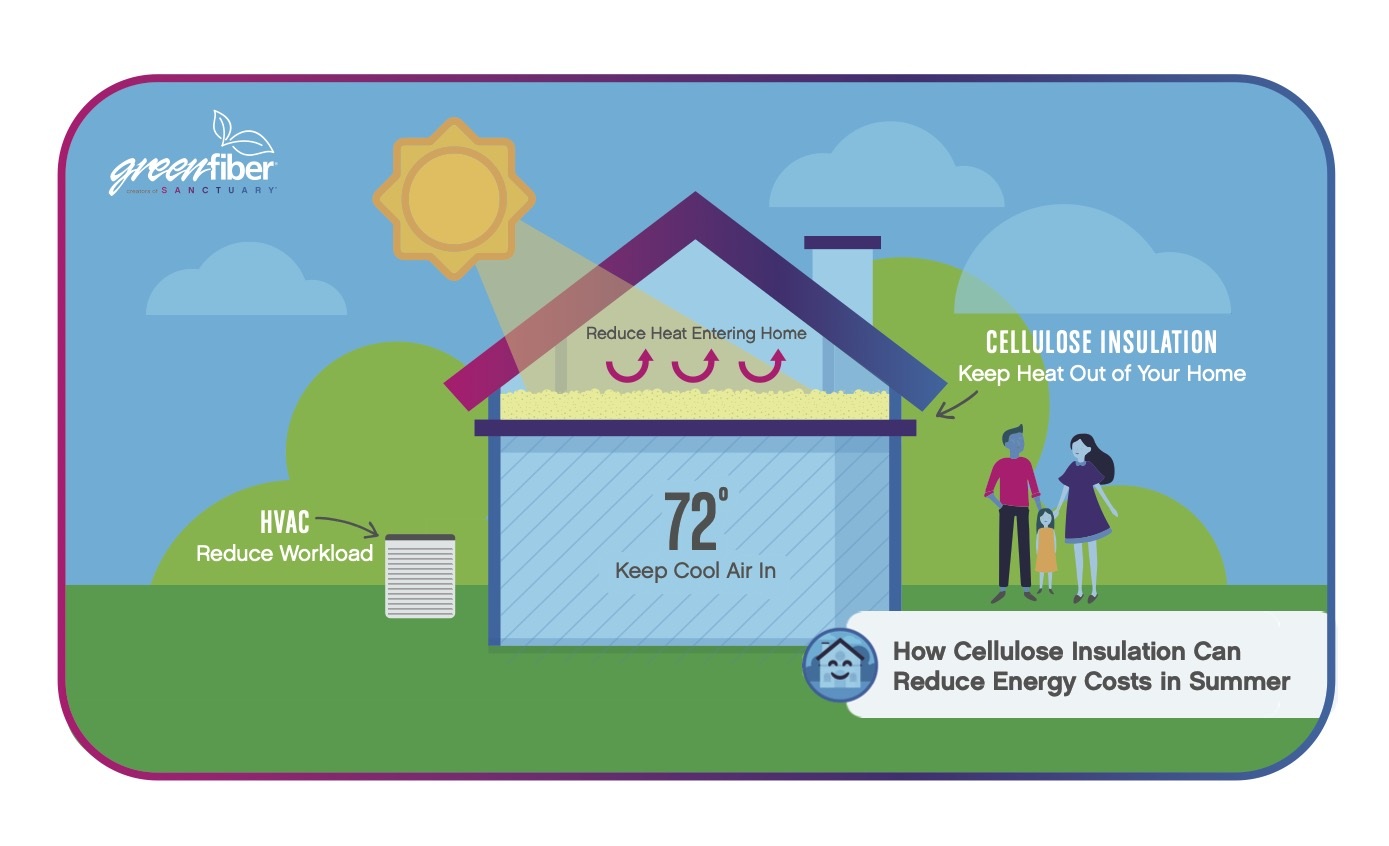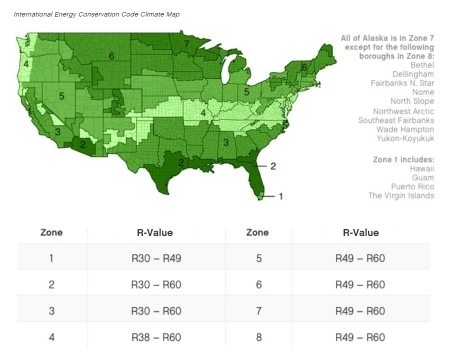
How Cellulose Insulation Can Help Reduce Your Energy Costs in the Summer
Ensuring your home’s insulation works effectively is a simple and affordable strategy to reduce energy expenses and help slow climate change. According to the U.S. Department of Energy, heating and cooling accounts for 43% of a home’s utility bill.
Proper insulation is one way to make your home more energy efficient. Cellulose insulation is made from recycled paper and wood fibers, providing a sustainable and effective way to reduce energy usage and decrease utility bills. This insulation helps maintain a comfortable indoor temperature, reduces the need for heating and cooling, and can last the lifetime of the home when properly installed.
Read on to uncover the cost-saving benefits of SANCTUARY® by Greenfiber cellulose insulation in the summertime and find answers to seven common home insulation questions.
Factors that Can Contribute to High Indoor Air Temperatures
Before diving into the benefits of cellulose insulation for summer energy costs, it’s important to understand the factors contributing to elevated temperatures in your home. Let’s start with the fundamentals.
- Climate and location: Your home’s location and the local climate play a crucial role in determining your home’s heat exposure. Homes in regions with hot, humid summers or those located in urban areas (e.g., with lots of concrete) may experience higher temperatures and require more cooling.
- Orientation and sun exposure: The orientation of your home and the amount of direct sunlight it receives can impact indoor temperature. South-facing windows and walls, for example, tend to receive more direct sunlight, which can lead to increased heat gain.
- Roof color and material: The color and material of your roof can affect how much heat the roof absorbs and transmits into your home. Dark-colored roofs tend to absorb more heat, while lighter colors and reflective materials can help reflect sunlight and keep your home cooler.
How Cellulose Insulation Keeps Heat Out of Your Home
When the outside temperature rises, cellulose insulation prevents the heat from infiltrating your home by slowing down the movement of heat through the roof, walls, ceilings and floors. This is because the dense, fibrous nature of cellulose impedes the transfer of heat.

Benefits of Cellulose Insulation for Summer Energy Savings
Provides Superior Thermal Resistance
Cellulose insulation is known for its high R-value. This means the insulation provides exceptional resistance to heat transfer. The material’s dense composition slows the transfer of heat. Cellulose insulation is also able to fill small gaps and voids in the insulation area, reducing air leakage and further improving thermal efficiency.
Reduces Your HVAC System’s Workload
By maintaining a consistent temperature inside your home, cellulose minimizes the need for your HVAC system to work overtime. This reduced workload can prevent unnecessary strain on the system, ultimately prolonging its life span. Insulation also helps buffer your home from extreme outdoor temperatures, reducing the impact on your HVAC system and helping it last longer.
Keeps You Cool and Comfortable in Your Home
Maintaining a consistent and comfortable indoor temperature is a key factor of home comfort. Cellulose insulation plays a significant role by regulating the air temperature, reducing drafts and minimizing energy loss. This results in a more enjoyable living space, as it keeps the home cool during the hot summer months. SANCTUARY homes that include insulation in exterior walls or attics, such as this net-zero home in Indiana, provide greater comfort and efficiency and lower the home’s carbon footprint.
Long-Term Energy Savings and Return on Investment
Properly installed cellulose insulation can offer significant cost savings and quick payback. Here’s why:
- Energy efficiency and longevity: Cellulose insulation helps regulate the temperature inside your home, reducing the need for heating and cooling. This results in lower energy consumption and cost savings on utility bills. Furthermore, when properly installed, cellulose insulation can last for many years, providing continuous energy savings and contributing to the overall sustainability of a home.
- Increased property value: A home with a properly designed insulation system can have a higher resale value for a few reasons: For example, a growing emphasis on sustainability among homeowners means homes designed with energy efficiency in mind, such as those that include SANCTUARY cellulose insulation, can appeal to a wider range of potential buyers. Tax incentives for energy-efficient homes also boost their attractiveness and resale value in the market
Frequently Asked Questions
1. How can I tell what climate zone I’m in for insulation?
To determine your climate zone for insulation, refer to the Department of Energy’s climate zone map, which divides the United States into different color-coded zones based on temperature and humidity. Once you have identified your climate zone, refer to the insulation guidelines provided by the DOE for that specific zone. These guidelines will suggest the appropriate level of insulation for different parts of your home, considering the climate conditions in your region. Understanding and following these recommendations can help ensure your home is properly insulated for its climate zone.

2. Will insulation make my house hotter in the summer?
It shouldn’t. Insulation helps regulate the temperature inside your home by preventing heat from transferring through the walls and roof. In the summer, insulation acts as a barrier to keep the hot outdoor air from entering your home, helping maintain a cooler indoor temperature.
3. How does attic insulation affect air-conditioning?
Attic insulation can affect air-conditioning in a few key ways. First, a well-insulated attic helps prevent hot air from infiltrating the living spaces below. This reduces the overall cooling load on the air-conditioning system. Additionally, well-insulated attics can help maintain more consistent indoor temperatures, reducing the need for the air conditioner to constantly cycle on and off. This can lead to improved comfort and the air-conditioning system’s life span.
4. How do I know if my attic needs more insulation?
A few signs may indicate that your attic needs more insulation. These include higher-than-usual energy bills, uneven temperatures throughout your home and visible attic floor joists. Professional insulation contractors can inspect your attic to confirm if more insulation is needed. Get in touch with a SANCTUARY Trusted Installer to help you assess the situation.
5. Does roof insulation reduce heat from outside?
Yes, roof insulation can reduce the amount of heat that enters a home from outside. The insulation acts as a barrier, preventing heat from transferring through the ceiling and into the interior of the home. This, in turn, helps the home maintain a comfortable indoor temperature.
6. How much cooler will the right insulation make my house in the summer?
The exact degree to which your home will be cooler depends on various factors such as the insulation material and its R-value, especially in leak-prone areas of the home like windows and doors. A well-insulated home with SANCTUARY can generally experience a reduction in indoor temperature by several degrees. This can make a noticeable difference in the home’s comfort level.
7. Does garage insulation help reduce heat from outside?
Yes: Just like indoor spaces, garage insulation can reduce the amount of heat that enters a home from outside.
Want to start saving on energy costs this summer? Reach out to a SANCTUARY Trusted Installer to determine your home’s insulation needs and get a quote.
- Category: Sustainability
